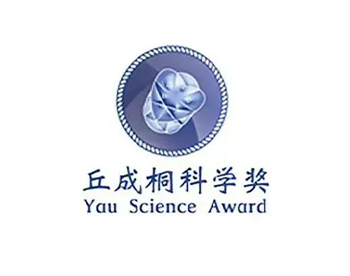2025–2026 Thermo Fisher Scientific Junior Innovators Challenge (JIC): Your Complete STEM Competition Guide
For middle school students passionate about science, research, and innovation, the Thermo Fisher Scientific Junior Innovators Challenge (JIC) stands as one of the most prestigious STEM competitions for grades 6–8. Often called the “Junior ISEF”, this national contest—organized by the Society for Science and sponsored by Thermo Fisher Scientific—recognizes the brightest young minds shaping the future of science and technology.
If you dream of joining the ranks of top young innovators, here’s your comprehensive guide to the 2025–2026 JIC, including eligibility rules, application steps, prizes, and insider tips.
I. What Is the Junior Innovators Challenge (JIC)?
The Junior Innovators Challenge, formerly known as Broadcom MASTERS, was rebranded in 2023 under Thermo Fisher Scientific’s sponsorship. The competition focuses on original STEM research projects by students in grades 6–8, encouraging them to solve real-world problems through creative, hands-on inquiry.
Unlike most competitions, students cannot apply directly to JIC. To qualify, they must first compete in a Thermo Fisher–affiliated regional science fair, where only the top 10% of participants receive JIC nominations. The Top 30 finalists then earn the chance to compete at Finals Week in Washington, D.C.
The 2025–2026 challenge upholds its mission of “learning through innovation,” offering up to $25,000 in scholarships and valuable research resources, including Wolfram Research tools for Top 300 participants.
II. Eligibility and Entry Requirements (Who Can Apply)
Before applying, ensure you meet every eligibility criterion—each requirement is critical to advance in this national STEM competition.
Grade Level and Enrollment
- Open to students enrolled in grades 6–8 during the competition year.
- Applicants must compete in an affiliated U.S. regional science fair; entries from outside the U.S. or its territories are not accepted.
Nomination Through an Affiliated Fair
- Participate in an affiliated fair between November 1, 2024, and June 1, 2025.
- Only top-performing students—typically the top 10%—receive official JIC nominations.
- Regional fairs submit the nominee list to the Society for Science for verification.
Project and Team Rules
- Projects may be individual or team-based (up to 3 members).
- Each team member must submit a separate application outlining their individual role.
- Past nominees may reapply with a new project, except winners of the ASCEND or Lemelson awards.
Compliance and Ethics
All projects must adhere to local, state, and federal laws, as well as JIC research safety guidelines. Studies involving human subjects, vertebrate animals, or hazardous materials must obtain IRB or SRC approval before experimentation.
III. Four Key Phases: From Idea to Finals Week
The Thermo Fisher Scientific JIC follows a four-stage process—Preparation, Regional Qualification, National Review, and Finals Week—each requiring careful planning and execution.
1. Preparation (January–April): Selecting a Strong STEM Research Topic
Choose a topic that connects science with real-life relevance—environmental issues, health innovation, or data-driven technology. Review past JIC winners for inspiration (e.g., microplastic removal, bee colony health, early Alzheimer’s biomarkers).
Compile a complete research report including background, hypothesis, methods, data analysis, and conclusion. Keep detailed lab notes and raw data, as these may be reviewed later. Since all materials are in English, clarity and writing quality matter.
2. Regional Science Fair (May–June): Earn Your JIC Nomination
- Registration Deadline: June 13, 2025 (varies by region)
- Evaluation Criteria: Innovation (40%), Scientific Method (30%), Presentation (30%)
- Only the top 10% of students earn a nomination to the national competition.
3. National Application and Evaluation (July–September): Reach Top 300 and Top 30
- Application Opens: February 1, 2025
- Submission Deadline: June 11, 2025
- Required Documents:
- Online application form
- Research report (must match regional submission)
- Project video presentation
- 1–2 recommendation letters
- Permissions and visual aids
Results:
- Top 300 announced: September 3, 2025 — each receives $125 and a Wolfram subscription.
- Top 30 Finalists announced: September 17, 2025 — advance to Finals Week in Washington, D.C.
4. Finals Week (October 24–29, 2025): Compete in Washington, D.C.
The Top 30 finalists showcase their projects before leading scientists, engineers, and educators.
Awards Include:
- ASCEND Award: $25,000 grand prize
- Lemelson Invention Award: $10,000
- STEM Category Awards: $3,500 (First Place) / $2,500 (Second Place) + iPads
Winners are announced publicly on October 25, 2025, and results are posted on the official website.
IV. Application Materials Checklist
Your submission package reflects your research integrity and professionalism. Double-check every file before submission.
Required Materials
- Completed online application form
- Full project report consistent with regional nomination
- Recommendation letters from mentors or science teachers
- Approval documentation for projects involving humans, animals, or biohazards
Visual Presentation Requirements
- Up to 2 PDF pages (8.5×11 inches) with a maximum of 3–4 visuals per page
- No links, QR codes, or embedded videos allowed
- Team members may include shared visuals but must explain their individual understanding
Important Rules
- AI-generated writing (e.g., ChatGPT) is strictly prohibited. All work must be original.
- Each team member must submit unique written responses.
- Ensure your materials match your regional fair project—discrepancies will disqualify your application.
V. FAQs: Everything You Need to Know About JIC 2025–2026
Can international students participate?
Only students competing at U.S.-based affiliated fairs are eligible. International students may participate if enrolled in a U.S. school or affiliated program.
Is there a participation fee?
No. The JIC competition is entirely free—no registration, review, or finals fees apply.
Can past nominees reapply?
Yes, with a new project and as long as they have not won major national awards previously.
Will all team members advance together?
Not always. JIC evaluates applications individually, meaning only select team members may reach the Top 300 or Top 30.
VI. Pro Tips for Success from Past JIC Participants
- Start early: Research your local science fair schedule by January.
- Keep all data organized: Original data and logs may be reviewed by judges.
- Practice public speaking: Strong English presentation skills can make or break your finals interview.
- Monitor official updates: Visit societyforscience.org/jic and enable email notifications for changes.
Final Thoughts: Why JIC Matters for Young Scientists
The Thermo Fisher Scientific Junior Innovators Challenge isn’t just a competition—it’s a transformative STEM experience. From hypothesis design to public presentation, every stage sharpens critical thinking, communication, and research skills.
For ambitious students aiming toward future success in science fairs, STEM internships, or top university applications, JIC 2025–2026 offers the perfect foundation.
Stay tuned for updates on the 2026 season—and start preparing your innovative project today.





